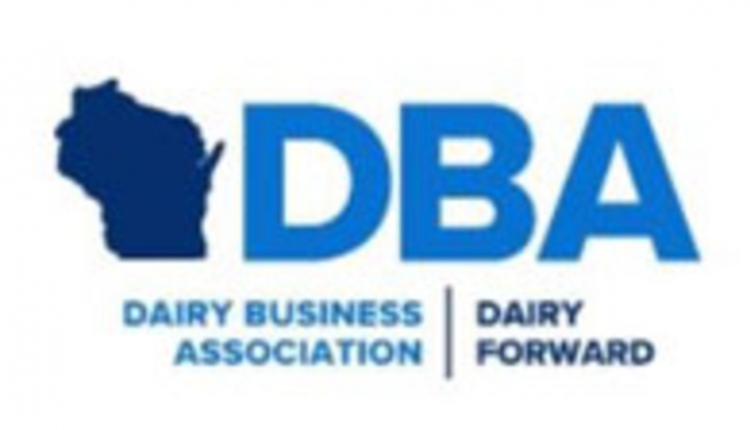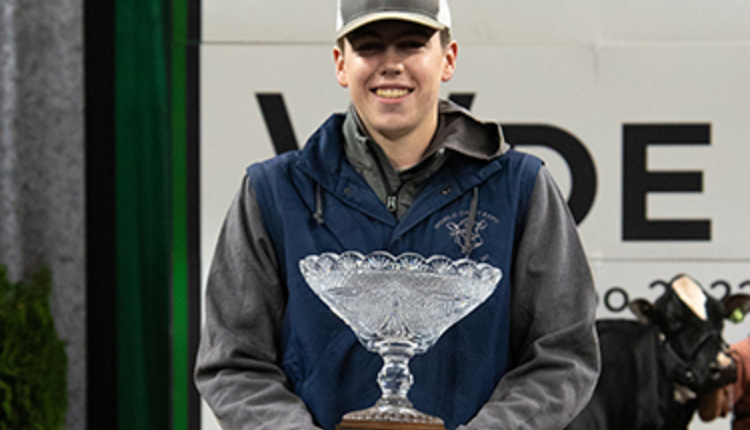by Corey Geiger, Hoard's Dairyman Assistant Managing Editor
When all is said and done, the farm bill basically was extended for one year. That is because language to renew most of its old components was inserted into legislation passed on New Year's Day to avert the fiscal cliff.
That farm bill language included provisions for the dairy program as the Price Support program was extended once again through December 31, 2013. One new wrinkle into the bill was that the MILC (Milk Income Loss Contract) was resurrected for 2013. Prior to the recent weeks activity, MILC was all but scheduled for delivery into the ag policy graveyard.
While most policy experts are still sorting through the fine details, we do know that MILC returned to its pre-September 1, 2012, rates. That includes payout at 45 percent of production with a ration adjuster of $7.35 per hundredweight. As you may recall, to fit into Congressional Budget Office (CBO) scoring, the MILC Program was reduced to 34 percent payout and a $9.50 ration adjuster after September 1 to the expiration of the program in 2012. The $7.35 ration value is much lower so it does raise the likelihood that there could be a payment in February.
Despite these provisions, it appears MILC will have little impact. "Looking ahead, there are very few payments expected based on futures contracts," noted the University of Wisconsin's Mark Stephenson.
There are some questions as to whether or not the recently renewed MILC program will be retroactive to October 1, 2012, when MILC first expired. Dairy specialists we talked to had varying thoughts on the answer to that question. In either case, it may be an interpretation that has little bearing because an MILC payment would have been unlikely in late 2012 if the program was in effect even with a $7.35 ration, but there would have been a 60 cents payment in September. Stephenson also wondered about sign-up for your starting date for payments - all items that USDA will have to interpret.
Also rolled into legislation was action on estate taxes. Elected officials set a new 40 percent rate on estates valued over $5 million. That is up from 35 percent in 2012. Without action by elected officials, estate taxes would have reverted to 55 percent on all estates above $1 million.
There are certainly some people who think agriculture's influence is waning. Even Ag Secretary Vilsack has voiced those thoughts in recent weeks. Bottom line, as national leaders looked to avert the fiscal cliff and save money, $24 to $38 billion in savings in the potential farm bill was not enough to get it passed.
As for the future, the farm bill discussions will start over when new leaders are appointed within Congress. One thing is for sure, the farm bill is back at the starting gate and it will take a back seat to debt ceiling negotiations. That includes any discussion about the Dairy Security Act with it margin insurance protection and its potential muffler on milk production.
"When you get to March, every new bill will have to get scored against the new baseline," noted Stephenson. " With growing national debt, you can be assured that there will be less money for new farm bill discussions this year."
When all is said and done, the farm bill basically was extended for one year. That is because language to renew most of its old components was inserted into legislation passed on New Year's Day to avert the fiscal cliff.
That farm bill language included provisions for the dairy program as the Price Support program was extended once again through December 31, 2013. One new wrinkle into the bill was that the MILC (Milk Income Loss Contract) was resurrected for 2013. Prior to the recent weeks activity, MILC was all but scheduled for delivery into the ag policy graveyard.
While most policy experts are still sorting through the fine details, we do know that MILC returned to its pre-September 1, 2012, rates. That includes payout at 45 percent of production with a ration adjuster of $7.35 per hundredweight. As you may recall, to fit into Congressional Budget Office (CBO) scoring, the MILC Program was reduced to 34 percent payout and a $9.50 ration adjuster after September 1 to the expiration of the program in 2012. The $7.35 ration value is much lower so it does raise the likelihood that there could be a payment in February.
Despite these provisions, it appears MILC will have little impact. "Looking ahead, there are very few payments expected based on futures contracts," noted the University of Wisconsin's Mark Stephenson.
There are some questions as to whether or not the recently renewed MILC program will be retroactive to October 1, 2012, when MILC first expired. Dairy specialists we talked to had varying thoughts on the answer to that question. In either case, it may be an interpretation that has little bearing because an MILC payment would have been unlikely in late 2012 if the program was in effect even with a $7.35 ration, but there would have been a 60 cents payment in September. Stephenson also wondered about sign-up for your starting date for payments - all items that USDA will have to interpret.
Also rolled into legislation was action on estate taxes. Elected officials set a new 40 percent rate on estates valued over $5 million. That is up from 35 percent in 2012. Without action by elected officials, estate taxes would have reverted to 55 percent on all estates above $1 million.
There are certainly some people who think agriculture's influence is waning. Even Ag Secretary Vilsack has voiced those thoughts in recent weeks. Bottom line, as national leaders looked to avert the fiscal cliff and save money, $24 to $38 billion in savings in the potential farm bill was not enough to get it passed.
As for the future, the farm bill discussions will start over when new leaders are appointed within Congress. One thing is for sure, the farm bill is back at the starting gate and it will take a back seat to debt ceiling negotiations. That includes any discussion about the Dairy Security Act with it margin insurance protection and its potential muffler on milk production.
"When you get to March, every new bill will have to get scored against the new baseline," noted Stephenson. " With growing national debt, you can be assured that there will be less money for new farm bill discussions this year."









